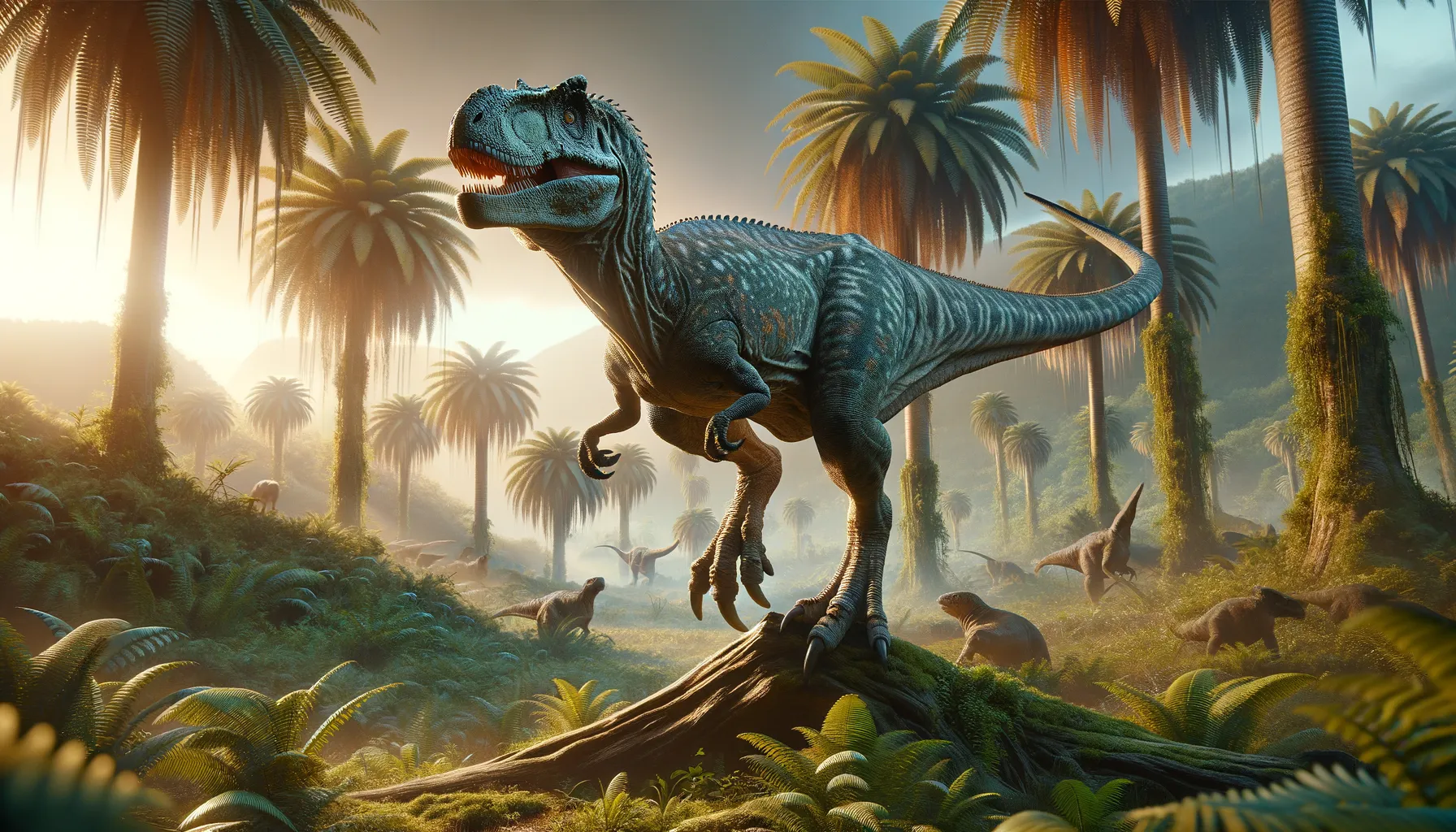
Kaijiangosaurus
Mid-Jurassic predator of the East!
Period
triassic
Length
Roughly 5 meters from head to tail.
Height
About 1.8 meters at the hip.
Weight
Approximately 700 to 1,000 kilograms.
Kaijiangosaurus is a relatively small theropod dinosaur that roamed the earth during the Mid-Jurassic period. Known for its bipedal stance, it was likely an agile predator. The discovery of its fossils in China has provided valuable insights into the diversity of dinosaur species during this era. Its physical build suggests it was adapted for a carnivorous lifestyle, feeding on smaller animals in its prehistoric ecosystem.
Diet
Kaijiangosaurus mainly had a carnivorous diet. It likely hunted smaller vertebrates and scavenged when prey was scarce. Its teeth were adapted to tear flesh, suggesting an active predatory lifestyle.
Hunting
Kaijiangosaurus likely used its speed and agility to catch prey. It may have hunted alone or in small packs, targeting vulnerable or isolated animals. Hunting involved an ambush strategy, relying on surprise to capture its meals.
Environmental challenges
Living in a diverse ecosystem, Kaijiangosaurus faced competition with other predators. It had to adapt to varying climate conditions, including fluctuations between wet and dry periods. Shifting vegetation due to environmental changes impacted prey availability. The dynamic landscape required adaptability and flexibility in hunting strategies.
Speed
Moderate speed for short bursts.
Lifespan
Estimated to be around 20 to 30 years.
First discovery
First discovered in Sichuan, China, in the early 1980s.
Fun Facts
- Kaijiangosaurus was a theropod dinosaur that lived approximately 160 million years ago during the Late Jurassic period.
- It was one of the early meat-eating dinosaurs, known for its sharp teeth and claws.
- The name 'Kaijiangosaurus' means 'Kaijiang lizard,' named after the region in China where its fossils were first discovered.
- Kaijiangosaurus roamed what is now China, and its fossils helped scientists understand the diversity of theropod dinosaurs in this area.
- Despite its name, Kaijiangosaurus wasn't very big, with estimates suggesting it was about the same size as a modern crocodile.
- This dinosaur had strong legs, which suggests it was a fast runner, potentially making it an efficient hunter.
- The discovery of Kaijiangosaurus has provided valuable insights into the evolutionary relationships of theropods and how they spread across ancient continents.
Growth and Development
Kaijiangosaurus experienced rapid growth during early life stages, crucial for avoiding predation. Juveniles faced high mortality but those reaching maturity could live for several decades. Fossil evidence suggests changes in diet as they matured, moving from smaller prey to potentially larger rivals. Social development might have included learning hunting strategies from older individuals.
Habitat
Kaijiangosaurus inhabited the lush, forested areas of what is now China. This region was rich in plant life, providing shelter and hunting grounds. Rivers and lakes offered plentiful water sources, attracting diverse fauna. The terrain featured a mix of open plains and dense thickets, useful for ambush hunting.
Interaction with other species
Kaijiangosaurus likely shared its habitat with various herbivorous dinosaurs, which served as prey. It faced competition with other carnivores but established its niche through specialized hunting techniques. Cooperative behavior within its species might have included group hunts. Defensive encounters with larger predators could involve strategic retreats or aggressive displays.
Natural lifespan
Kaijiangosaurus's natural lifespan was around 20 to 30 years.
Reproduction
Kaijiangosaurus reproduced by laying eggs in nests constructed from vegetation. Parental care may have involved guarding nests until hatching. Hatchlings were relatively independent but vulnerable to predation. Social structures around nesting areas could help protect young from threats.
Social behaviour
Kaijiangosaurus might have exhibited solitary or small-group behaviors based on available resources. During hunting, coordination with others could improve success rates. Social hierarchies likely existed, with dominance determined by size and strength. Vocalizations or physical displays might communicate territorial boundaries or attract mates.
Fossil locations
Kaijiangosaurus fossils have primarily been found in the Sichuan Basin of China. Discoveries in this region have been crucial for understanding the diversity of Mid-Jurassic theropods. The well-preserved remains provide insight into the anatomy and lifestyle of this predator. Ongoing excavations continue to uncover more about its ecological role.
